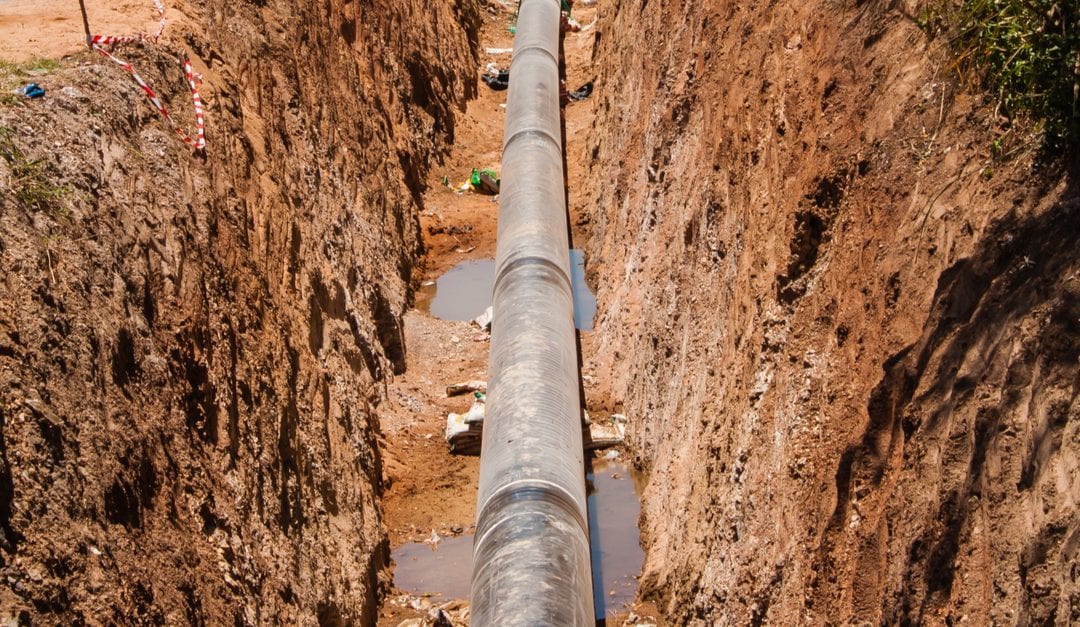
Warning: Before you set out to dig the gas lines, make sure the structural integrity of the site should not be compromised or supposed to have any lasting harm because, in some cases, it can be highly disastrous, especially if compared to accidentally striking a gas pipe while digging them.
Unintentionally, a massive leak or an explosion would probably kill countless lives. All this could be prevented if you have sufficient knowledge of how deep gas lines are buried, and to give you the required amount of information required to avoid mishappenings, read this article till the end.
How Far Down Are Gas Lines Buried
Based on your locality, different countries have different requirements. For instance, California’s regulations state to have at least 18 inches of deeply buried gas lines.
Whereas Rockland and Orange, a New York and New Jersey-based company, states that lines must be buried at least 24 inches beneath the ground.
Holding a variety of opinions and variations across the country and among the countries as well, The Health and Safety Executive in the UK states different measurements of gas lines depending upon the area.
Like, 23 inches in the footpath, 24 inches in the private ground, and many more.
So, you should check the regulations of your country and state of residence to find out how deep your gas pipeline is in general and precisely where you plan to dig.
Why Natural Gas Line Has Burial Depth?
If you wonder about this question, let me give you a reasonable explanation. Natural gas pipelines tend to flow much more profoundly than on private land in high-traffic areas, such as roads, highways, and sidewalks.
The more people there are in your area and the more traffic or workload you have, it means there are higher chances that someone will accidentally touch your gas line, and it might explode, leading to loss of life and property.
On the contrary, shallow gas pipelines can be triggered by severe car accidents.
Therefore, to ensure safety and secure connection, special drilling tools are required to go down to this depth and are usually owned by people with the necessary experience to use them correctly without damaging the pipeline.
Where Are Gas Lines Usually Located
Dominating the areas where utility is the primary factor, gas pipes are prevalent in both urban and rural spaces. Keeping the fact in mind, the answer to the above question clearly depends upon the locality, but in some cases, the gas lines are laid out in public areas as well.
If you live in the US, dial the 811 number for inquiries about where gas lines and other necessary information about the contractors, maintenance workers, or individuals before starting excavation.
To ensure the process is carried out efficiently and effectively, the ideal situation is to call ahead on three working days when you are planning to start the digging process to give the hotline sufficient time to respond to it and carry out all the necessary operations.
If possible, get your area to cross-check to ensure if everything is alright before getting the area to dig.
If you are not ready to go for public hotlines, then there are plenty of private options available too. These private hotlines are extremely dedicated from the start to the end of the process.
Plus, the giant construction teams ensure complete safety. Further, These companies often use ground-penetrating radars (GPR). This radar sends a signal through the ground and then reflects off the subsurface material to produce a reading.
The managers operating GPR machines are well trained and highly specialized in their field. These readouts obtained are ensuring the proper levels and right conditions required for drilling the pie.
However, the suggested reading is proper up to 6 inches only. Hence, one needs to ensure that drilling is not too close to the suspected pipeline.
At last, gas pipelines are often identified by colored flags and letters. If you see one of them hanging around, don’t dig it. Most likely, there is a gas pipeline right under your feet.
What Happens If You Hit a Gas Line?
Already discussed above, the consequences of a blow to a gas pipeline can be severe, such as a leak or a complete explosion, depending on the nature of the line, what the pipe hits, and how and where the leak occurred in the line.
Obviously there are a lot of variables to understand. As you know, drilling near gas pipelines is a very delicate operation and requires extreme care and precision to ensure that the results are not dire.
If you are trapped in a gas pipeline, you must report it immediately. The helpline numbers are given below. Contact them immediately:
The immediate gas pipeline emergency number in the UK is 0800 111 999.
In the United States, give a call to your state’s gas line hotline.
Strikes and failure to report on gas pipelines can be costly and dangerous. Fines range from $4,000 in Kentucky to $10,000 in Washington State and $50,000 in California, plus local damage repair costs.